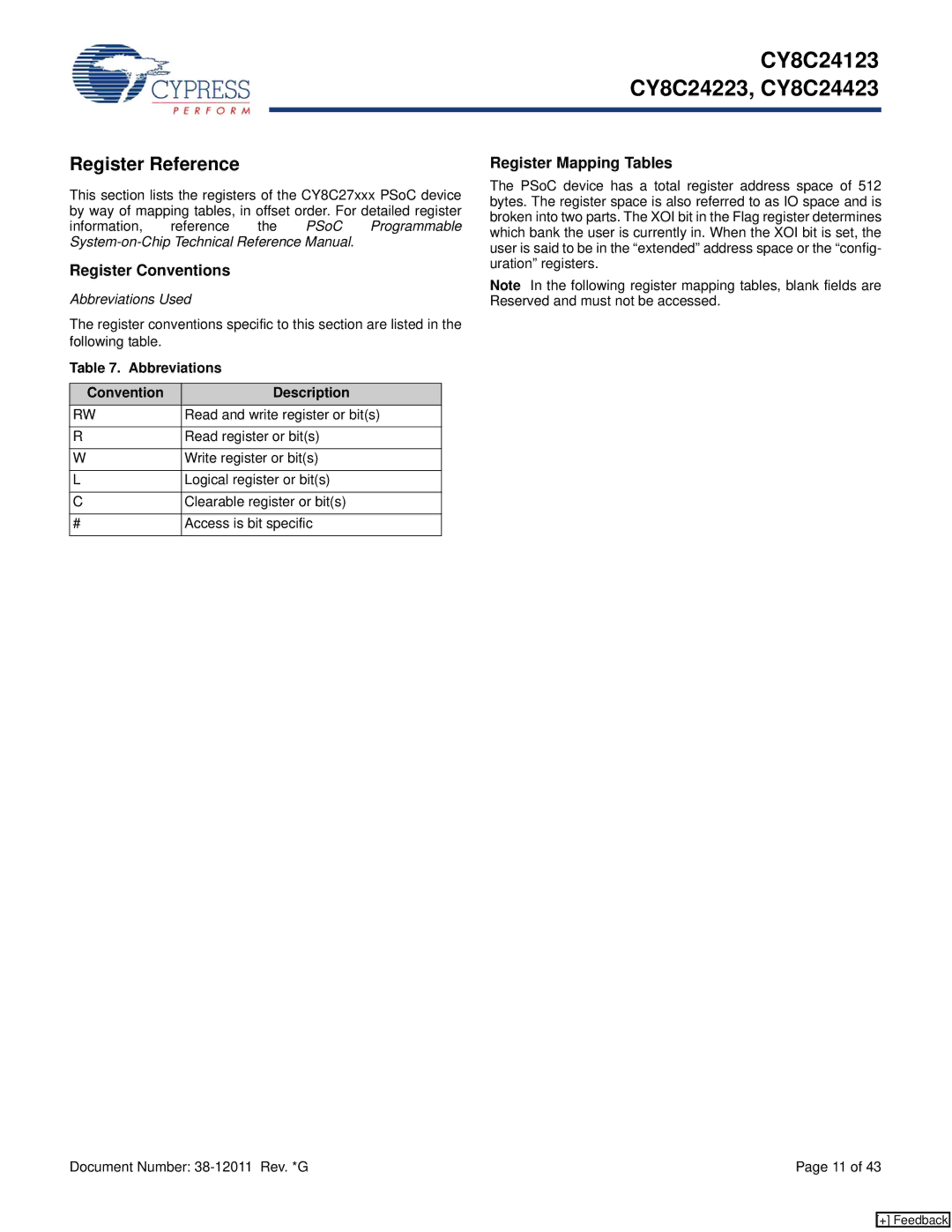CY8C24123, CY8C24423, CY8C24223 specifications
The Cypress CY8C24223, CY8C24423, and CY8C24123 are members of the PSoC (Programmable System-on-Chip) family, which combine a microcontroller with configurable analog and digital blocks. These devices are designed for a variety of embedded applications, offering versatility and performance for developers looking to create custom solutions.One of the standout features of the CY8C24223, CY8C24423, and CY8C24123 is their programmable analog and digital components. These include operational amplifiers, comparators, and even CapSense technology, enabling touch sensing capabilities. This flexibility allows engineers to configure the chip according to the specific needs of their application, thereby reducing the number of external components required and simplifying PCB design.
The microcontroller core in these PSoC devices is a 16-bit architecture, offering a balance between performance and power efficiency. The CY8C24223 and CY8C24423 variants include higher RAM and Flash memory options, catering to more demanding applications compared to the CY8C24123. This makes them suitable for tasks ranging from simple control operations to more complex computational processes.
A key technology utilized in these devices is the integrated programmable interconnect, which allows for easy communication between the various configurable blocks. This feature significantly speeds up the development process by enabling designers to create custom peripheral setups without the need for extensive coding.
In addition to their hardware features, Cypress provides an intuitive design environment called PSoC Creator. This IDE simplifies the process of configuring the device, allowing developers to drag and drop components into a design schematic and generate code effortlessly. PSoC Creator also includes simulation features, enabling testing and validation of designs before deployment.
The PSoC family is known for its low power consumption, which is crucial for battery-operated devices. The power management features integrated into these models allow for various operational modes, making them energy-efficient and ideal for portable applications.
In summary, the Cypress CY8C24223, CY8C24423, and CY8C24123 are powerful and flexible programmable system-on-chip solutions. With a combination of configurable analog and digital blocks, solid performance specifications, and an easy-to-use development environment, these devices stand out for engineers working on innovative embedded applications across numerous industries. Their low power consumption further enhances their appeal for modern applications, making them a strong choice for designers.

